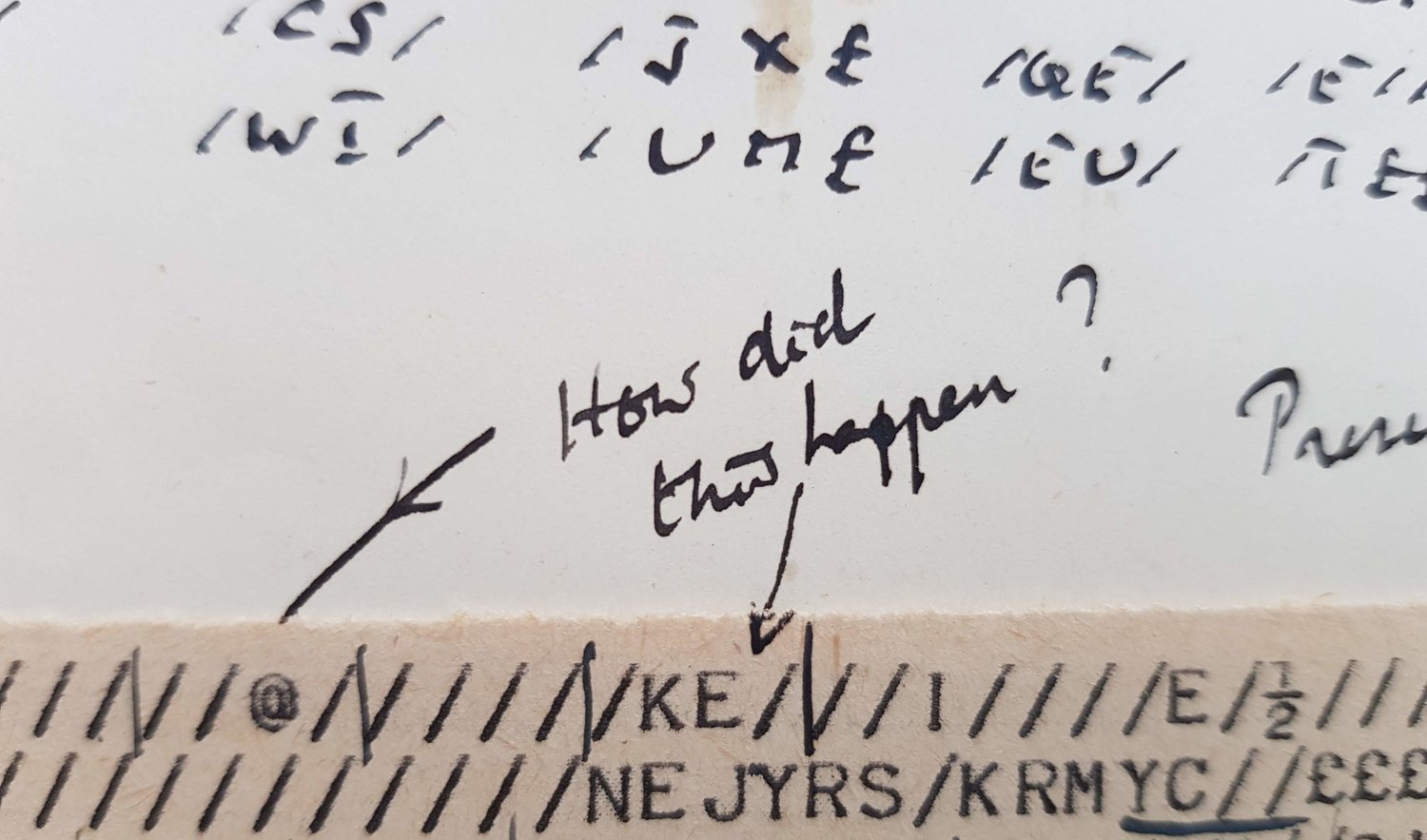J Robert Oppenheimer in 1953. I’ve never seen this photograph elsewhere. This came via ancestry.co.uk who do not, I think, claim copyright of it, but I do not know if anyone else does.
One of the sadder by-ways I encountered in my research was the story of Oppenheimer’s time in Cambridge. (The original version of this article explained who Oppenheimer was but thanks to Christopher Nolan I don’t need to now).
Oppenheimer spent a couple of years in the UK’s Cambridge straight after graduating from Harvard. He went because at the time Ernest Rutherford, in the Cavendish Laboratory, was a world leader in atomic physics. Oppenheimer was given what Harvard (and no doubt the other Cambridge) thought a glowing reference: “As appears from his name Oppenheimer is a Jew, but entirely without the usual qualifications of his race”, and he arrived as a student at Christ’s College in September 1925.
At the time Oppenheimer was full of anxiety about whether he would fit in and his fears were not dispelled “I do not think that Cambridge can be quite as bad as Oxford. But its excellencies are just as fantastically inaccessible, and there are vast, sloppy strata where there is nothing, absolutely nothing to be found. “
Oppenheimer was a strange young man and there are sad stories of what on any reading was poor mental health during his Cambridge years. He rolled around on the floor in front of Rutherford. But two stories stand out for their particular strangeness. The first, that he left a cyanide-poisoned apple for his supervisor Patrick Blackett, is of uncertain truth – something happened, but exactly what is unclear. Given Alan Turing’s own relationship with Blackett as a patron, and the trans-Atlantic resonances between Oppenheimer and Turing, each publicly damaged because of their private beliefs, a cyanide apple is a startling extra connection (which I could not help but mention in the book). I’m still curious about what of this story is true. I’ve not found any Cambridge tutorial or departmental archives that might shed any light on it, but then I’ve not looked very closely.
On the other hand, I can now announce (tada!) a footnote to the other astonishing story of Oppenheimer in Cambridge. His parents were so concerned about his state of mind that, the accounts go, they came over from New York specifically to be with him. Oppenheimer went down to Southampton to meet them off the boat. On the train down he shared a compartment with a couple who were ‘making love’ to the extent that he could not concentrate on his thermodynamics text, as couples will, and when the man left the train Oppenheimer attempted to take his place. The reaction of the woman involved is not recorded but Oppenheimer immediately burst into tears and begged for forgiveness. He then, at Southampton station, left the train, walked over the platform bridge and then dropped his suitcase on the woman’s head before heading off to meet his mother. He missed. The story (and again, quite where truth lies is unclear) moves away from actual or attempted assault after this, thankfully, but it doesn’t get much less weird: his mother had attempted some matchmaking and brought a platonic ex-girlfriend of his, Inez Pollak, over with her on the boat, so that the first person he saw was Inez. Back in Cambridge Inez and Robert tried and failed to have sex, which ended with them both in tears, and with Robert’s mother, who was patrolling the corridor outside, a fact surely related to the tristesse, knocking on the door saying ‘Let me in Inez’. Inez had enough and left for Italy. As one of his biographers drily writes, ‘Robert’s emotional state continued to deteriorate’; though Robert was self-possessed enough to ensure Inez received a copy of Dostoevsky as a parting gift, as you do.
Like the apple story, the evidence for the Southampton strangeness is a bit complicated to go in to here. It is primarily based on the testimony of a close friend named Francis Fergusson, and Monk’s Oppenheimer biography explains why that is likely to have some core of truth. What nobody seems to have identified before is a day for the Southampton incident. Thanks to the availability online of British immigration records, I can now confidently say – tada! as promised - that the something happened on 11 December 1925, which is when Inez Pollak and Ella Oppenheimer (Robert’s mother) are certified as having arrived at Southampton on the Leviathan. So a small piece of substantiation of a murky story.
Oppenheimer completists might want to note that (contrary to the account in both Monk and Bird and Sherwin), Oppenheimer’s father was not on the Leviathan that day. Also, going back a year, it turns out the entire family had landed in Southampton on 20 June 1924 in a trip which is not recorded in either of those biographies, and might well have been related to Oppenheimer’s offer of a place in Cambridge later on in 1924, and also that Oppenheimer’s father arrived in the UK alone in December of 1924, presumably on a brief business visit. I’ve relied in this post on the Oppenheimer biographies of Monk and of Bird and Sherwin, and ancestry.co.uk; as usual other references are available in my book Alan Turing Manchester.

